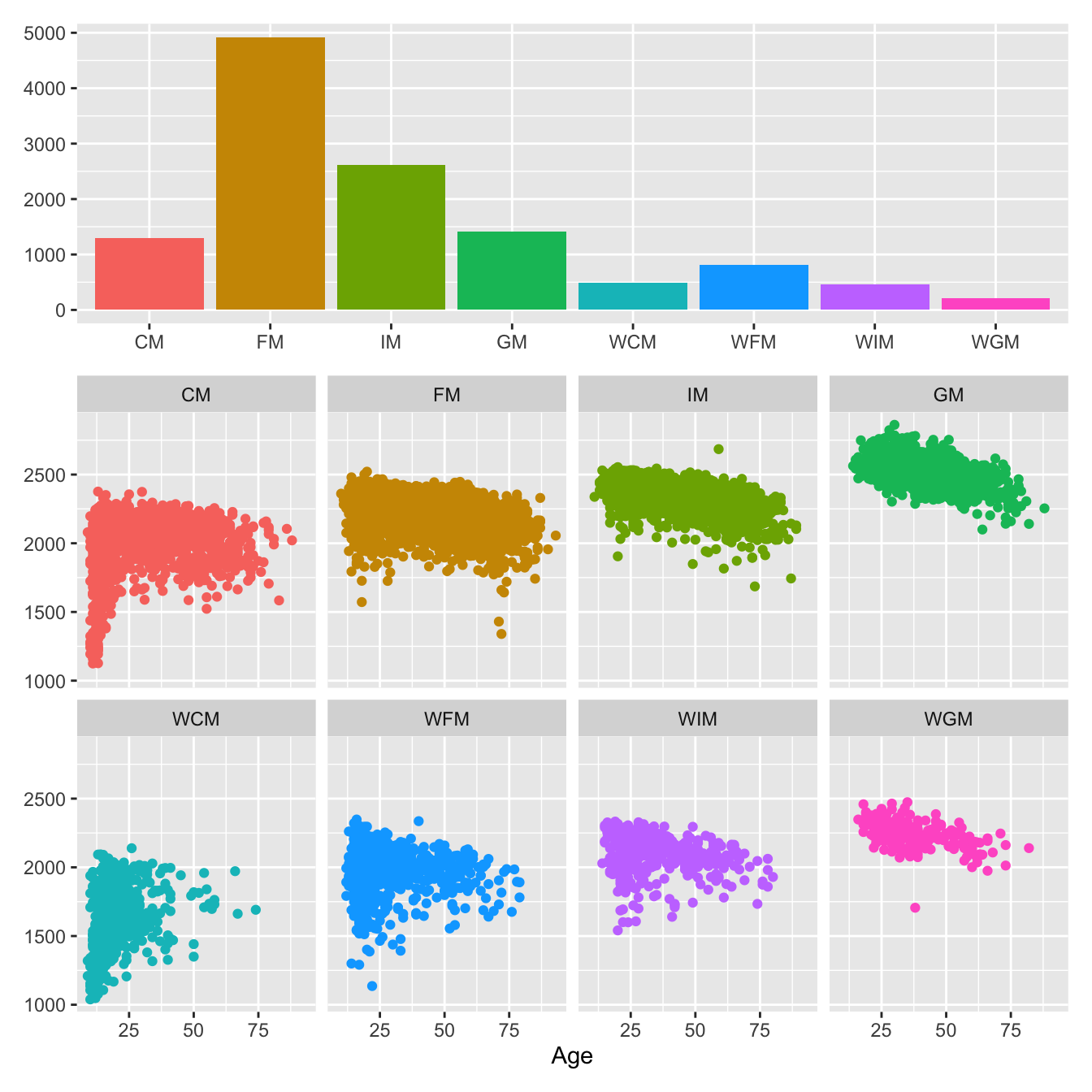8.5 Grandmasters and Masters
There are four titles for chess players: candidate master (CM), FIDE master (FM), international master (IM) and grandmaster (GM). The history of the introduction of titles for players is not fully clear. The GM title started to be used informally just before the first World War and official international regulations for the award of the titles GM and IM were introduced by FIDE in 1950. There are a parallel set of titles for women (WCM to WGM), but the strongest women opt for the open titles. Titles are awarded based on performance as well as rating, and the regulations are relatively complex. In the December 2020 ratings there were 37 female grandmasters (GMs) (of whom 8 were inactive) and an additional 317 WGMs (105 inactive). By comparison there were 1686 male GMs (300 inactive).
Figure 8.23 includes a barchart of the numbers of active players with different titles and scatterplots of the ratings of those players against their ages.

Figure 8.23: Numbers of active titled players and their ratings by age
There are more players in each of the open categories than in any of the female categories, although the qualification levels for those are lower. This is another effect of far fewer women playing than men. There are more FIDE masters (FMs) than any other title.
The point clouds rise as the title level rises, but there is quite a lot of overlap between titles. The highest ratings for each title drop with age, partly because players gain a higher title, partly because players’ performance tends to decline with age. The levels for open titles are higher than the levels for women for each title. Some very young players with low ratings qualified as candidate masters. There are a few low outliers, presumably players who have lost form badly for one reason or another. There is a single upper outlier in the IM category, Igors Rausis, who admitted cheating and lost his grandmaster title in December 2019. As he immediately retired, he should be counted as inactive, but remained classified as active for a year under the special 2020 pandemic rule.
Answers Ratings have a skew distribution. More younger players have ratings than older players. Far fewer women play chess than men. Russia has the most grandmasters, while Spain and France had the most active rated players in 2020.
Further questions How do the ratings of individual players develop over time? How have numbers of active players by country changed over time? FIDE now publishes ratings for Rapid and Blitz chess as well as the so-called Standard ratings considered in this chapter are Standard ratings. How do the three types of rating compare for the players?
Graphical takeaways
- Boxplots are good for extreme outliers in large populations. (Figures 8.2, 8.6 and 8.19)
- Density estimates are effective for comparing distributions. (Figures 8.4, 8.5, 8.14 and 8.15)
- Line widths proportional to group sizes work well when the sizes are very different. (Figures 8.7 and 8.9)
- Smooths summarise scatterplot relationships in large datasets. (Figures 8.22 and 8.21)